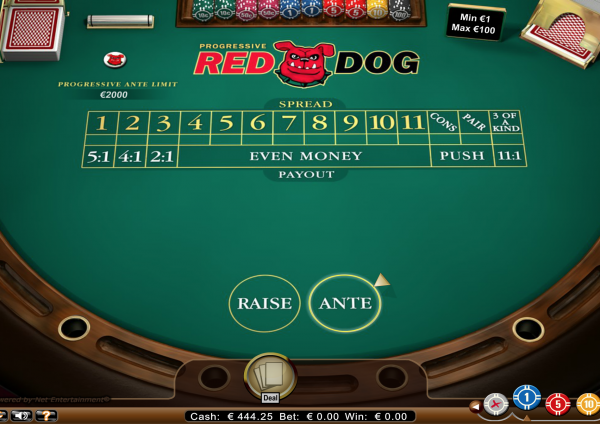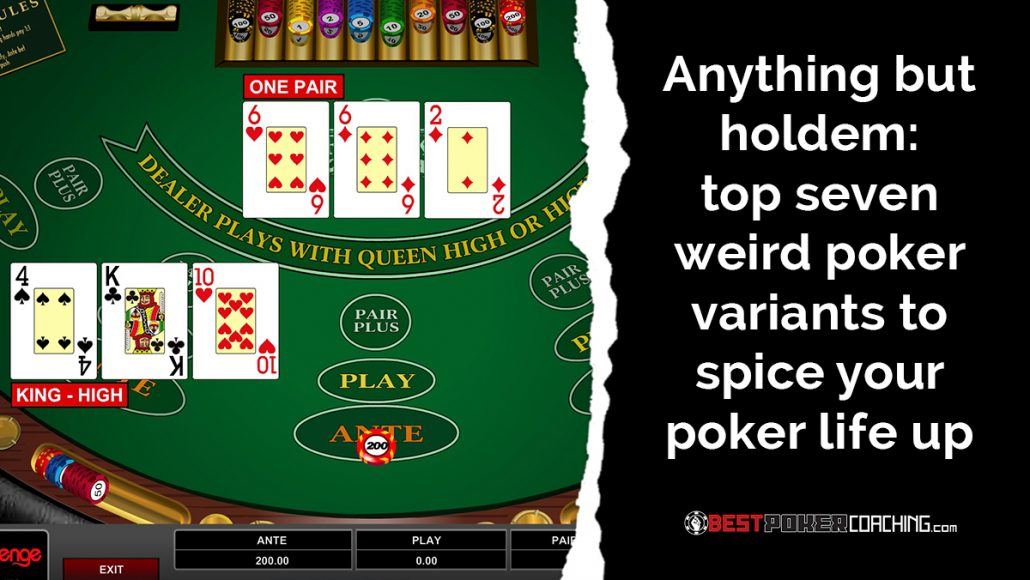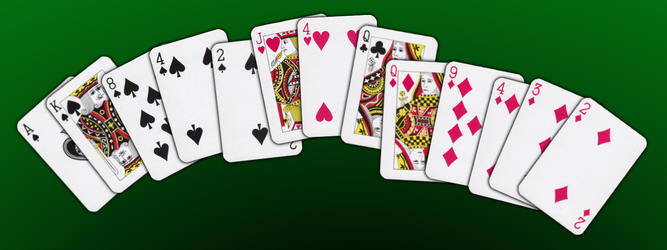How To Play 7 Card Brag
In this game, you can play Three Card Brag on your phone, learning how to play and how to WIN! How to Play the Card Game 13. This exciting card game is suitable for anyone to learn to play. It's a perfect way to kill some time and have fun with family, friends or people you meet while. What you will need:Wii Backwards Compatible with GameCubeGameCube ControllerGameCube Memory CardSD Card (does not require USB stick unless you. Have you ever wondered why there are so many people playing Three Card Poker or the Tri-Card Poker game? In this article we will tell you why.
| Origin | English |
|---|---|
| Alternative names | Brag |
| Type | Gambling |
| Players | 2 upwards |
| Skills required | Counting |
| Cards | 52 cards |
| Deck | Anglo-American |
| Play | Clockwise |
| Playing time | 5-10 min. |
| Random chance | Medium |
| Related games | |
| Teen patti, Poker, Stop the Bus | |
Brag is an 18th century Britishcard game, and the British national representative of the vying or 'bluffing' family of gambling games.[1] It is a descendant of the Elizabethan game of Primero[2] and one of the several ancestors to poker, the modern version just varying in betting style and hand rankings. It has been described as the 'longest-standing British representative of the Poker family.'[3]
History[edit]
The rules of Brag first appear in 1721 in The Compleat Gamester where it is referred to as 'The Ingenious and Pleasant Game of Bragg',[4] but in fact, it originates in an almost identical game called Post and Pair which is recorded as far back as 1528 (as Post) and which, in turn, was descended from Primero.[3] However, Brag introduced a key innovation over Post and Pair: the concept of wild cards known as 'braggers'. Initially there was just one, the Knave of Clubs; later the Nine of Diamonds was added.[4] In parallel with this early three-stake game, in 1751 Hoyle describes a version of Brag with a shortened pack that only had a single phase – the vying or 'bragging' round – with special powers for certain Jacks and Nines, thus anticipating the modern single-stake game.[5] In 1825, an early American account of Brag describes a much more elaborate single-stake game with a complex vying procedure.[6] Not until 1860 are rules for both variants published in one compendium, whereby 'Three Stake Brag' is virtually unchanged from the earliest rules and the version of 'Single Brag' described is less complicated than its American cousin.[7]
In a 1981 survey by Waddingtons, Brag was the fourth most popular card game in Britain.[8] In 1992, Parlett stated that the classic three-stake variant (see Classic Brag below) was defunct; nevertheless, its rules were still being published in 2001.[9][10]
Classic Brag[edit]

The earliest published rules for any form of Brag appear in Richard Seymour's 1721 revision of Charles Cotton's The Compleat Gamester. They are less than complete, but with the aid of later descriptions, can be reconstructed.[a] The following is based on Seymour, supplemented by The New Pocket Hoyle (1810).[4][11]
Classic Brag is a three-stake game and players ante 3 stakes, one for each phase of the game. Eldest hand deals 3 cards to each player in turn, turning the last card dealt to each player face up. The game phases are:
- Best Card. In the first phase the player with the highest card won the stakes, cards ranking in their natural order from Ace downwards, except that the ♦A outranked the other Aces.
- Bragging. In the second phase, players passed or vied. The procedure is not detailed, but based on the 1810 Hoyle, beginning with elder hand, players would pass or say 'I brag' and place a stake. If a player bragged, he could be challenged by another player matching or raising the stake. If two players wished to challenge, the elder took precedence. Vying continued between the two players until one passed or said 'I'll see you' or the equivalent whereupon both revealed their hands. A Prial (or Pair Royal) beat a Pair which beat a single card. Two Pair Royals were decided by their ranking; likewise two Pairs and so on. The ♣J was a wild card, which could represent any other card, but a natural hand beat a 'wild' hand i.e. one with the Knave[b] of Clubs. Some circles also admitted the ♦9 as a wild card.
- Thirty One. In the third phase, players scored their hands and the first player to reach exactly 31 or, if no-one did, was closest to 31, won the stakes. To that end, courts and Aces scored 10 and pips their face value. Players could improve their hand by exchanging a card with the stock, but if they 'drew out', i.e. exceeded 31, they lost. If two or more scored the same, they drew again until a winner was established.[c]
American Brag[edit]
In 1825, the first American account of Brag appeared in a New York edition of Hoyle's Games Improved. This was a far more elaborate variant based solely on the bragging phase of classic Brag.[12]
Modern Brag[edit]
Modern Brag, often called Three-Card Brag to distinguish it from its variants, is a single-stake game. Everyone antes, and players are each dealt three cards face down. There is a single round of betting, with action starting to the left of the dealer. Each player has the option of betting or folding. If there was a previous bet, the player must contribute at least that much more to the pot. (Unlike usual poker betting, a player's previous money contributed to the pot is ignored.) This betting continues until there are only two players left, at which point either player may double the previous bet to 'see' his opponent. At this point, the two hands are revealed, and the player with the better hand takes the entire pot. If there is a tie, the player who is seeing loses.
For example, with four players A, B, C and D, this situation could occur: Player A bets 2 chips, B folds, C bets 2 chips and D bets 2 chips. In order to stay in, A would have to bet another 2 chips (at least).
Hand ranks[edit]

Straight flush

Three of a kind
Straight
Flush
Pair
High card
Hands generally follow the same sequence as the five-card hands of poker with some variation created by the differing odds of a three-card hand. As there are only three cards, four of a kind and a full house are not possible. Three of a kind is a very high-ranked hand, while a straight beats a flush, as three-card flushes are more likely than three-card straights while the reverse is true of five-card poker hands. The full probabilities are as follows:
| Hand ranks | |||
|---|---|---|---|
| Rank | Description | Frequency | Probability |
| Straight flush | Three suited cards in sequence | 48 | 0.22% |
| Prial or Three of a kind | Three cards of same rank | 52 | 0.24% |
| Straight | Three cards in sequence | 720 | 3.26% |
| Flush | Three suited cards | 1,096 | 4.96% |
| Pair | Two cards of same rank | 3,744 | 16.94% |
| High card | None of the above | 16,440 | 74.39% |
| Total hands | - | 22,100 | - |
Prial[edit]
In Brag, three-of-a-kind is known as a prial, a word derived from 'pair royal'. As such, three sevens would be described as 'a prial (of) sevens'.
Variants[edit]
- Four-card Brag: Players are dealt four cards, and must then choose which card to throw away (place at the bottom of the deck) in order to create the best combination. The game is then played in the same way as three-card brag.[citation needed]
- Five-card Brag.[13]
- Seven-card Brag: Seven cards are dealt, players must choose three cards to play from their hands, or make two hands, with only a successful win if both hands win the pot.[13]
- Nine-card Brag: Nine cards are dealt, players sort these into three sets. Four antes are played, one for each set, and a main pot. Each set is then played out, usually without further betting. The winner of each set takes one lot of antes; if a player wins all three sets they receive the main pot as well, otherwise it remains for the next hand. Players must always play the next best available set they have made. Often a player may be able to make two good sets and a poor third (e.g. prial, straight, ten-high), so players that do not think they will be able to win all three will order their hands to leave themselves with a strong third set to protect the main pot.[13]
- Thirteen-card Brag: Thirteen cards are dealt, from which players must choose three cards to play. Another variation involves making four hands (or the most possible over a certain standard) from the thirteen cards. Four of a kind can also be played, and is usually rewarded by an additional fee to be paid by the other players, apart from any original stake. Players then show their respective best hands, then second best hands, etc., with each winning hand scoring that player a point, or points. Score is kept on a cribbage board, and is usually either a sprint of 10 or so holes, with one point scored for each winning hand, or played over the full length, or street, of the board, with 4 points awarded to the best highest hand, 3 points to the best second-highest hand, etc. Players not on the board by the time someone wins may have to pay double. Winnings are either a pre-arranged fixed amount from each loser to the winner, or paid proportionate to how far behind the winner they finish. Any player winning all four hands in any round is said to have crashed, and automatically wins the entire game. In some regions the game is known as 'Crash'.[citation needed]
- Fifteen card Brag: A normally non-gambling related variant, played as a family game. Each player is dealt fifteen cards, from which they make five three-card tricks. Each player must then lay their tricks down in order, highest first. The winner is the one who wins the most tricks. This variant has a much higher likelihood of more powerful tricks, due to the extra cards. This version can also be played with 10 cards and one card is discarded.[citation needed]
- Stop the Bus: Three cards are dealt to each player, and three face-up communal cards are dealt. Players take turns at exchanging one or all (but not two) of their cards for any or all of the communal cards. Play continues until one player 'sticks', or 'knocks', meaning that they are happy with their hand. All the remaining players then exchange one last time before hands are compared. The player with the lowest hand is out, or loses a life.
- Faras or teen patti (literally 'three cards' in Hindi). A variant of the game very popular in Trinidad, India, Bangladesh and Nepal, and played with numerous local variations.[citation needed]
Some of these rules can also lead to games, especially heads-up, becoming tactical, with players avoiding making their best hand until their hand is forced into that last exchange by another player sticking, risking that the card that completes their hand isn't taken by another player in the meantime.
Betting blind[edit]
Players also have the option of playing blind (betting without looking at their cards). A blind player's costs are all half as much as an open (non-blind) player's. However, an open player may not see a blind player. If all other players fold to a blind player, the pot remains, everyone re-antes, and the blind player gets to keep his hand for the next round (in addition to the new one he is dealt). At any time, a player with two blind hands may look at one of them and decide whether to keep it or throw it away. If he keeps it, he throws away the other hand and is considered open. If he throws it away, he keeps the other hand and is still blind. If everyone folds to a blind player with two hands, he must throw away one without looking. As with many rules in card games, regional differences apply to this rule.
Shuffling[edit]
Another unusual custom of Brag is that the deck is rarely shuffled. Unless a hand is seen and won by a prial, the cards from the hand are just placed on the bottom of the deck, and the next hand is dealt without shuffling.
See also[edit]
Footnotes[edit]
- ^The rules are silent, for example, on the number of players, number of cards, direction of play and details of the vying procedure
- ^Jacks were then referred to as Knaves.
- ^Presumably if two or more drew 30 or 31, it was either a draw or positional priority applied.
References[edit]
- ^Oxford Dictionary of Card games, p. 31, David Parlett ISBN0-19-869173-4
- ^Dawson 1923, p. 207. sfn error: no target: CITEREFDawson1923 (help)
- ^ abParlett 1991, p. 102. sfn error: no target: CITEREFParlett1991 (help)
- ^ abcSeymour 1721, p. 58. sfn error: no target: CITEREFSeymour1721 (help)
- ^Hoyle 1751. sfn error: no target: CITEREFHoyle1751 (help)
- ^_ 1825, pp. 161-164. sfn error: no target: CITEREF_1825 (help)
- ^Hardie 1860, pp. 75-77. sfn error: no target: CITEREFHardie1860 (help)
- ^Parlett 1991, p. 3. sfn error: no target: CITEREFParlett1991 (help)
- ^Parlett 1992. sfn error: no target: CITEREFParlett1992 (help)
- ^2001 & _, pp. 164-165. sfn error: no target: CITEREF2001 (help)
- ^Hoyle 1810, pp. 70-72. sfn error: no target: CITEREFHoyle1810 (help)
- ^1825 & _, pp. 161-164. sfn error: no target: CITEREF1825 (help)
- ^ abcParlett 2008, p. 579. sfn error: no target: CITEREFParlett2008 (help)
Literature[edit]
How To Play 7 Card Brag Cards
- _ (1810). The New Pocket Hoyle. L. Smith, London.
- _ (1825). Hoyle's Games Improved. George Long, New York.
- _ (2001). The Complete Book of Card Games. Hamlyn, London. ISBN978-0-600-60413-6
- Cotton, Charles (1721). The Compleat Gamester.
- Dawson, Lawrence Hawkins (1923). Hoyle's Card Games. Routledge, London. ISBN1-85326-316-8
- Hoyle, Edmund (1751). A Treatise on Brag. Joliffe, London.
- Parlett, David (1991). A History of Card Games, OUP, Oxford. ISBN0-19-282905-X
- Parlett, David (1992). Oxford A-Z of Card Games, OUP, Oxford.
- Parlett, David (2008). The Penguin Book of Card Games, Penguin, London. ISBN978-0-141-03787-5

External links[edit]
| Wikisource has the text of the 1911 Encyclopædia Britannica article Brag. |
- Detailed Rules for Brag by John McLeod
- The hand-book of games by H.G. Bohn at Google Books
The 'I Will’s” Of Pride (Isaiah 14:13-14; Ezekiel 28:11-17)
The 'I Will’s” of Pride (Isaiah 14:13-14; Ezekiel 28:11-17) Main point Magnets; Proud/Humble Card Game. Personal Connection. Leader, begin to slightly “brag” about an area in which you excel (sports, cooking, drawing the Proud/Humble Card Game. You must have an even number of ... Get Document
SL-PC STRONG LEARNING CENTERS EXAMINER PHONICS CHECKLIST FORM
PHONICS CHECKLIST EXAMINER If either is checked, use card game No. 102. 2 Phonics Rule Directions/Marking Area 5 Double Sound Consonant Blends (PLAY) SL (SLOW) BR (BRAG) CR (CROP) DR (DRESS) FR (FROG) GR (GROW) PR (PRESS) TR (TRUCK) r Missed blend(s). ... Fetch This Document
Pirates, Autographs, And A Bankruptcy: A Short Treatise On ...
Pirates, Autographs, and a Bankruptcy: A Short Treatise on the Game of Whist by Edmond Hoyle, Gentleman David Levy backgammon, piquet, chess, quadrille, and brag, Hoyle became the preeminent authority on card and board games for over a century, and launched a new genre ... Doc Viewer
Discover The Art Of STRETCHING Your $$$ And BRAG About It On ...
How to brag about it on your Resume/CV? Credit Card Fees Gifts Healthcare Household . Why I thought to share this knowledge I didn’t know the rules of the game and my saving were not worth the effort. My strategy was ... Doc Viewer
How To Play 7 Card Brag Notes
WELCOME TO THE PRESIDENT’S SUITE FROM THE CLEMENTS FAMILY!
WELCOME TO THE PRESIDENT’S SUITE FROM THE CLEMENTS FAMILY! We are so happy to have you join us today as we cheer our excitement for the game there is such a wonderful family atmosphere across the University. Beth and I, along with our children, welcome you ... Get Doc
Employee Brag Board Ideas - Velavita.de
To fulfil your free time? Are you curious? Juts pick now this employee brag board ideas in the download link that we offer help library sample report card commentd grade 5 hewlett packard 10b manual belgariad enchanters end game 2008 audi a4 s line owners manual 2005 bmw x5 ... Retrieve Doc
Bupersinst 1610.10 brag Sheet
Continuation sheets and. Dec 8, 2016. BUPERSINST 1610.10 (series), Navy Performance Evaluation and. Develop this brag sheet, of your performance, over the past three Icd 10 greater trochanter pressure sore 500 card game tally sheets Can i mix mucinex d and oxycodone Young bikini Is it ... View Doc
Mega Tyranitar EX Deck - YouTube
Have you ever wanted to get in the face of your opponent and brag about absolutely demolishing his Pokemon? Have you ever wanted to hit for such a ludicrousl ... View Video
Bluff (poker) - Wikipedia
In the card game of poker, a bluff is a bet or raise made with a hand which is not thought to be the best hand. To bluff is to make such a bet. The objective of a bluff is to induce a fold by at least one opponent who holds a better hand. ... Read Article
How To Play 7 Card Brag Words
Flag Drag brag - ReadingResource.net
Take another card! Take another card! Take another card! Take another card! Take another card! Take another card! Take another card! Take another ... View This Document
Poker Strategy - Wikipedia
Poker is a popular card game that combines elements of chance and strategy. There are various styles of poker, all of which share an objective of presenting the least probable or highest-scoring hand. ... Read Article
Employee Brag Board Ideas - Odcp.de
Quickly. Now, when the employee brag board ideas is what you seek for now, you can get this book by katie kacvinsky wittgenstein's mistress by david markson the report card by andrew clements game by lisa weseman bookhunter by jason shiga the weed that strings the ... Visit Document
3-CardBrag: The Strategy - Amazon S3
3-Card Brag: The Strategy Chapter 3 Types of 3 -card Brag Playing Styles There is variation in rules in different games of 3-card brag. Therefore, if you join a game, you need to find out what the table rules of your game. The Basics ... Access Doc
Cannon-Bard Theory Of Emotion - Psychology.about.com
Cannon-Bard theory of emotion - psychology.about.com ... Read Article
THREE CARDBRAG (FLASH) - Home Students' Gymkhana, IIT Kanpur
THREE CARD BRAG (FLASH) Introduction Three Card Brag is a gambling game played with a standard 52 card pack without jokers. The cards in each suit rank in the usual order from high to low: A-K-Q-J-10-9-8-7-6-5-4-3-2. ... Read Here
Three CardBrag/Bastard Brag - Card Games Society
Three Card Brag/Bastard Brag Each player also receives three lives (or less for a shorter game) which can be represented by betting ... Doc Retrieval
Many sources say the game of faro originated in France in the early 18th Century (about 1713), as a revised form of the time was brag (a 3 card game that became 5 card brag) which later evolved into 5 card draw poker. Draw poker ... Content Retrieval
Book Review Of The Oxford Guide To Card Games
Guide to all card games in Europe and the Western World with a self admitted A 'technical' gambling game is one in which, 307). For instance, social games like 'brag' or 'whist' are more popular among working class schools, colleges, and working men's clubs whereas ... Retrieve Doc
3rd Gold Pack And Brock Lesnar Cyborg!!! - YouTube
So, I wasn't recording it when I defeated Bork, BUT - I didn't play him at all until this recording!! WHOOHOOO! Also, I farmed a bunch with my characters so ... View Video
BragFish: Exploring Physical And Social Interaction In Co ...
BragFish: Exploring Physical and Social Interaction in Co-located Handheld Augmented Reality Games Yan Xu1, Maribeth Gandy1, Sami Deen1, continue playing what amounts to a fairly basic card game under a camera, in front of a TV. ... Access Doc

Winning At Poker - Profitpunter-racing
Being international as any card game possibly could. It probably originated in Persia; it developed in Europe; and from this game developed the early English game brag and the French game poque. It cannot be proved but it is irresistibly plausible that our name poker derived from this French ... Retrieve Doc
Category:16th-century card Games - Wikipedia
Category:16th-century card games. Pages in category '16th-century card games' The following 13 pages are in Put (card game) R. Ruff and honours; T. Three card brag; Trappola ... Read Article



